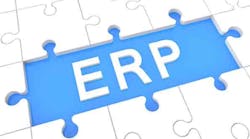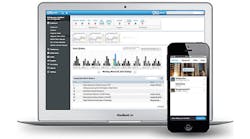Cloud software has tremendous potential to help small- and medium-sized manufacturers compete with large enterprises. But what if that software assumes that you want to operate just like them?
According to Business Week, more than 250,000 manufacturers in the U.S. have 500 or fewer employees; and while supply chain, material resource planning and other disciplines look a lot the same when practiced wisely, no two companies do it the exact same way. Software that makes a lot of assumptions about how your team likes to build things may be more problematic than practical. That’s why configurability matters.
Consider the estimation process: you want your lead estimator to have some leeway in the way he or she uses the software to organize parts, for example. An estimation template in your software solution is a nice start, but if it’s too rigid, nobody’s going to use it or, if it is used, there will still be critical information gaps between your estimator and the shop floor. Which not only creates confusion but also costs time and money—the two things your software salesperson promised that you would save in the first place.
Templates are useful, but if they can’t be configured by your team to fit the way they like to work, they’re just another hindrance to efficiency and accuracy. The same goes for non-production players on your manufacturing team. When your financial and sales leadership wants a clearer picture of performance, they’ll want some latitude in how they can categorize products, territories and customer types.
Configurability is incredibly important when you’re seeking actionable business intelligence. Why be stuck with standardized reporting that inundates you with data if all you need to do this quarter is keep your eye on a hand-picked group of KPIs? A configurable solution means you can get reporting on things you decide are important, possibly seeing which jobs are delivering better margins. Spotting trends is another important ability for small- and mid-sized manufacturers who are seeking to become leaner and more profit-oriented.
Configurability means being able to drive more efficient operations and better high-level decisions with a tool that can work the way you want it to—not one driven by a programmer’s assumption of how your unique enterprise should operate.
So what should you look for in a configurable manufacturing solution? Here are a few of the baseline requirements you should consider:
• Ability to extend your application with new functionality (e.g. business processes) not just changing the presentation of existing functions.
• No requirement to write or maintain software code – this is one of the key hallmarks of configuration vs. customization.
• Drag-and-drop modeling and design tools to rapidly define your processes.
• Built-in workflow automation (BPM) to save you time and improve productivity.
Remember that the entire point of configuration is to give you a more precise and effective solution, without making your life more difficult. That’s the type of solution we can all live with!
Katie Hilyar is a project manager at KeyedIn Manufacturing, a developer and supplier of cloud-based business management systems for manufacturers and those who manage distributed enterprises. Contact her at LinkedIn.









